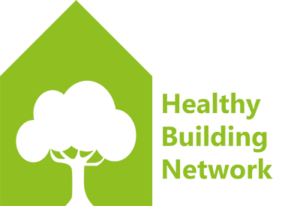by Désirée Driesenaar, Blue Economy Expert
We, as Healthy Building Network, are on the road towards healthy buildings and we are very glad that many people and companies are joining us on this path. We innovate together and we share best practices. And of course we also share the results with our community and beyond. Healthier people, less sickness leave, cleaner environments and an overall better feeling of wellbeing.
How do we achieve all this?
If we talk about innovations people often think of machine innovations or material innovations. And those are important. Definitely. But here are less obvious solutions as well. Earlier I wrote about termite ventilation,where a solution based on natural principles (hot air rises) replaces air conditioning machines that require a lot of energy. Well, there are many other solutions based on natural principles that can inspire us for a healthy climate in our buildings.
For example purifying plants. What? Plants?
PURIFYING PLANTS
Yes, plants! They are incredibly intelligent helpers in our environment and we should give them the credits they deserve. As early as 1989, NASA studied the effect of plants on indoor air pollution and they found many plants that help clean the air of pollutants such as benzene, formaldehyde, trichloroethylene, xylene, toluene and ammonia. Plants such as certain date palms, ferns, ivy, lilies and philodendrons do the job.
A list of air-filtering plants and their specific qualities can be found in this article: https://en.wikipedia.org/wiki/NASA_Clean_Air_Study
MICROBES
A different study in 2004 revealed that certain micro-organisms in the soil of potted plants can also remove benzene from the air: https://en.wikipedia.org/wiki/Soil_microbiology.
And the next step is cleaning with microbes. Although our normal ways are to kill all microbes before they do damage, many studies nowadays reveal that increasing the number of helpful microbes might be a much better way to tackle cleaning issues. On the one hand the positive microbes help to keep the damaging ones under control and as an extra effect they improve the immune system for better overall resistance. Good microbes can really be an alley in our healthy buildings.
IMPLEMENTATION
But I get distracted from my subject: purifying plants. There are already many examples where purifying plants are implemented for a better climate, indoor and outdoor. One look at the municipality office of Venlo shows you that this building does not only use plants for better indoor air quality and climate but also clean the air going out and make this part of Venlo a better place for its inhabitants to live and breathe. We really hope that architects, builders, clients and inhabitants will become inspired and will include the wisdom of plants into their designs and building requirements.
There are many examples of implementation. From indoor moss walls and ingenious plant greenhouses that guide the air through, to simple potted plants that do their work modestly. There are ways to water plant walls automatically and to help with easy maintenance. And the innovations are still in early stages. Cleaning grey and black waste water with plants can be done in so called helofyte filters, rain water overloads in cities can be prevented by green roofs and gardens. And what to think of food forests that are designed specifically for inspiration, natural shelter and supply of fresh fruits and nuts to people working in industrial areas? People are part of nature. We thrive in a green environment that minimizes stress and gives maximum inspiration. So please, let”™s give nature and plants a central spot in our healthy buildings. They deserve the credit and we deserve the benefit!
INNOVATION ROADS
For those who want to innovate with plants or microbes to ensure we can live and work in healthy buildings, there are several possibilities. Share your knowledge in our community and find new partners for your business and innovations. Be inspired by the knowledge and events that are being organised regularly. Also cross-border knowledge can be bought with the financial help of vouchers for those who are on this road with us.
We would love to hear from you.












